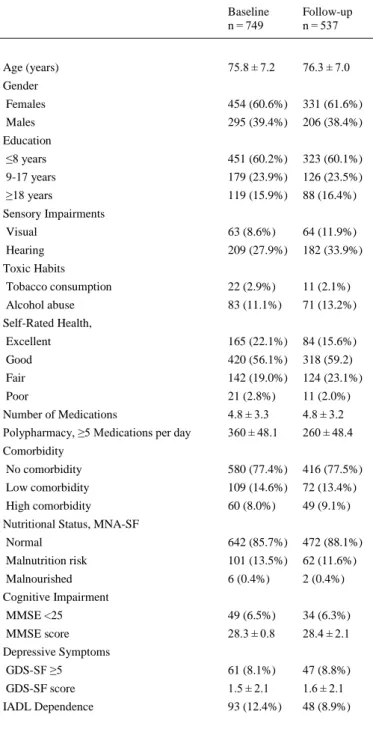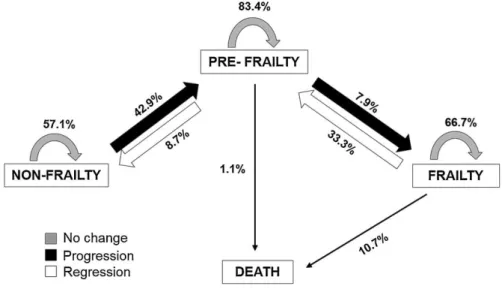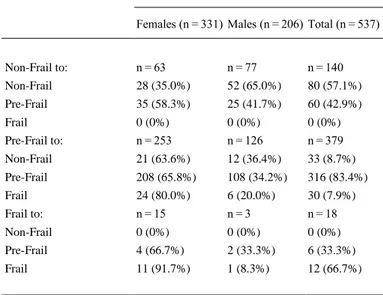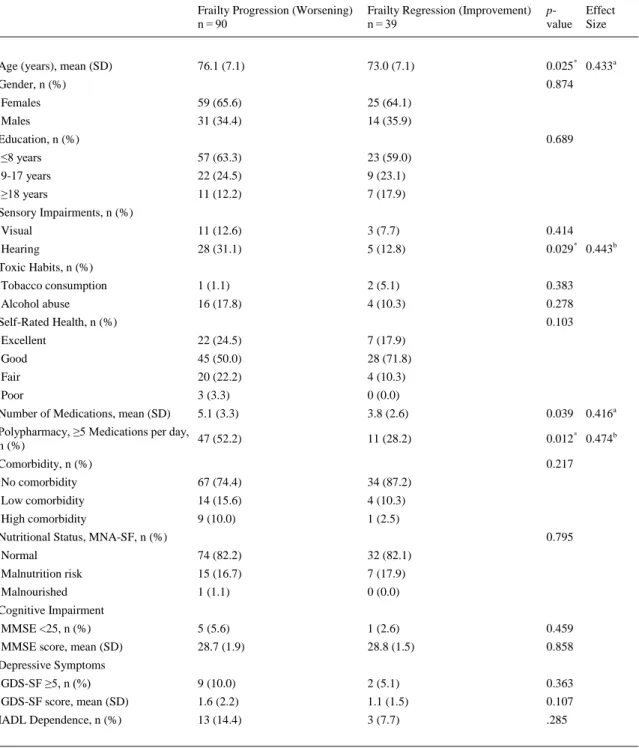TítuloChanges in frailty status in a community dwelling cohort of older adults: the VERISAÚDE study
Texto completo
Figure




Documento similar
Methods: A cross-sectional study was conducted in community-dwelling participants in the “2008 Span- ish National Disability Survey”, a representative sample of 91,846 households
In this prospective study of community-dwelling older adults, higher serum leptin concentration was associated with greater risk of impairment in mobility, agility, lower
In accordance with that discussed, the aim of the present work was to examine dietary habits, nutritional status, and physical activity engagement in older adults in the city of
The expansionary monetary policy measures have had a negative impact on net interest margins both via the reduction in interest rates and –less powerfully- the flattening of the
The current study shows a prevalence of falls (25.9%) simi- lar to those observed by other authors who also focused their research on older adults living in the community.. 17 The
Relative risks (95% confidence interval) of frailty with the weight loss criteria defined as a 10% weight reduction in 2 years according to categories of sweetened bever-
Plotinus draws on Plato’s Symposium (206c4–5) – “procreate in what is beautiful” – 3 in order to affirm that mixed love (which is also a love of beauty) is fecund, although
The results of the present study are similar to those obtained in previous studies and point that institutions for older adults should offer activities that encourage participation
